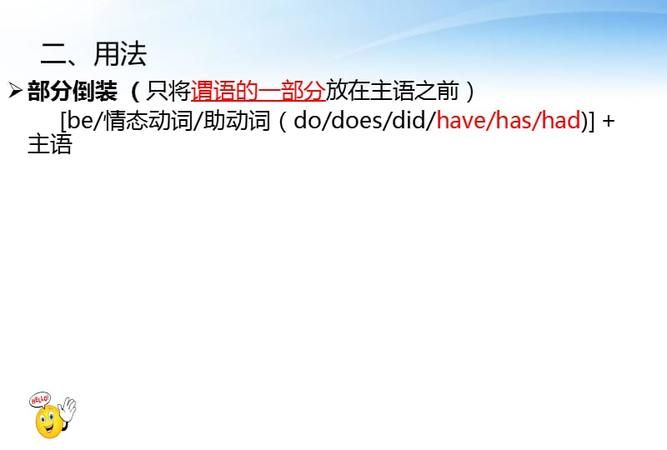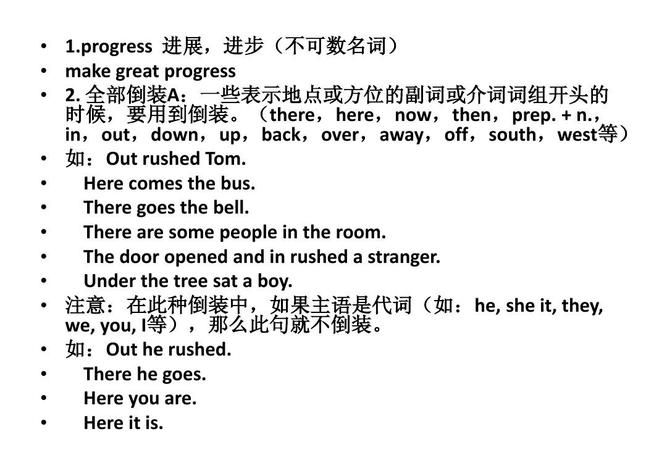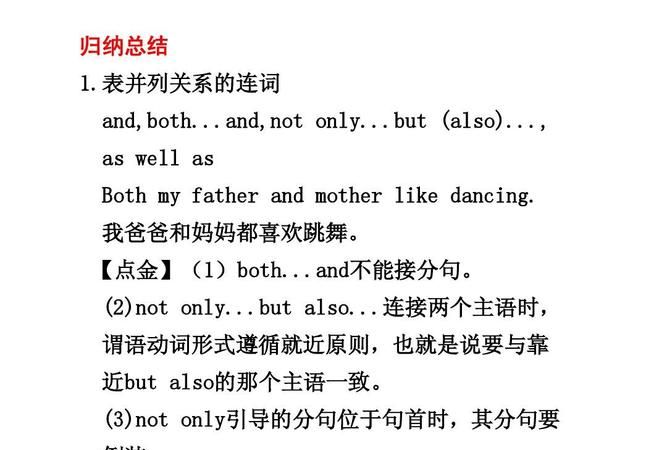本文目录
完全倒装的情况下 时间方位副词位于句首 哪种情况是不用倒装的呢
主语是代词的情况不用倒装
分词和不定式置于句首时,也可使用完全倒装形式。这时主要是起强调作用,而将谓语的现在分词、过去分词、不定式放在句首形成倒装。

频度副词位于句首要倒装吗
具有否定意义的副词位于句首才倒装,当然也包括频度副词,如never,hardly,seldom等。

副词倒装
如果是含有否定意义的副词放在句首的话,
句子需要倒装。
常见的否定副词有hardly, rarely, seldom, never等等。
例句:
Hardly had he entered the office when he realized that he had forgotten his report.
Rarely does she come here alone.

否定副词位于句首
否定副词位于句首时的倒装
在正式文体中,never, seldom, rarely, little, hardly, scarcely, no sooner, no longer,
nowhere 等含有否定意义的副词若位于句首,则其后要用部分倒装:
I shall never forgive him. / Never shall I forgive him. 我永远不会宽恕他。
He seldom goes out for dinner. / Seldom does he go out for dinner. 他很少出去吃饭。
She hardly has time to listen to music. / Hardly does she have time to listen to music. 她几乎没时间听音乐。
He little realizes how important this meeting is. / Little does he realize how important this meeting is. 他不甚明白这个会议的重要性。
We had no sooner reached the airport than the plane took off. / No sooner had we reached the airport than the plane took off. 我们刚到机场,飞机就起飞了。
【注意】
(1) 对于not…until句型,当not until…位于句首时,其后的主句要用倒装语序:
He didn’t leave the room until the rain stopped. / Not until the rain stopped did he
leave the room. 雨停了之后他才离开这房间。
(2) 某些起副词作用的介词短语,由于含有否定词,若位于句首,其后要用部分倒装:
On no accounts must this switch be touched. 这个开关是绝不能触摸的。
In [Under] no circumstances will I lend money to him.无论如何我也不会再借钱给他了。
但是,in no time(立即,马上)位于句首时,其后无需用倒装语序:
In no time he worked out the problem. 他马上就算出了那道题。
2.“only+状语”位于句首时的倒装
当一个状语受副词only的修饰且置于句首时,其后用部分倒装语序:
Only then did he realize that he was wrong. 到那时他才意识到他错了。
Only in this way are you able to do it well. 你只有用这种方法才能把它做好。
Only when he returned home did he realize what had happened. 当他回到家里时,才知道出了什么事。
3. “so+adj. / adv.”位于句首时的倒装
副词so后接形容词或副词位于句首时,其后用部分倒装:
So cold was the weather that we had to stay at home. 天气太冷,我们只好呆在家里
So fast does light travel that we can hardly imagine its speed. 光速很快,我们几乎没法想像它的速度。
So sudden was the attack that we had no time to escape. 袭击来得非常突然,我们来不
及逃跑。
4.“so+助动词+主语”倒装
当要表示前面提出的某一肯定的情况也同样适合于后者,通常就要用“So+助动词+主语”这种倒装结构:
You are young and so am I. 你年轻,我也年轻。
She likes music and so do I. 她喜欢音乐,我也喜欢。
If he can do it, so can I. 要是他能做此事,我也能。
【注意】
(1) 若前面提出某一否定的情况,要表示后者也属于同样的否定情况,则应将其中的so改为neither或nor:
You aren’t young and neither am I. 你不年轻,我也不年轻。
She hasn’t read it and nor have I. 她没有读它,我也没有读。
(2) 注意该结构与表示强调或同意的“so+主语+特殊动词”结构的区别:
"It was cold yesterday." "So it was." “昨天很冷。”“的确很冷。”
"Father, you promised." "Well, so I did." “爸爸,你答应过的。”“嗯,是答应过。”
5. 由not only…but also引出的倒装
当not only…but also位于句首引出句子时,not only 后的句子通常用部分倒装形式:
Not only is he a teacher, but he is also a poet. 他不仅是一位教师,而且是一位诗人。
Not only did he speak more correctly, but he spoke more easily. 不仅他讲得更正确,也讲得更不费劲了。
倒装句
为了强调、突出等词语的目的而颠倒原有语序的句式叫做倒装句。在倒装句中,颠倒了的成分
可以恢复原位而句意基本不变,句法成分不变。

以上就是关于副词位于句首要倒装吗 ,英语中副词放在句首要不要倒装的全部内容,以及副词位于句首要倒装吗 的相关内容,希望能够帮到您。

